-
 Bitcoin
Bitcoin $119000
0.17% -
 Ethereum
Ethereum $3664
-2.12% -
 XRP
XRP $3.229
-7.77% -
 Tether USDt
Tether USDt $1.001
0.02% -
 BNB
BNB $783.2
-1.48% -
 Solana
Solana $191.3
-5.26% -
 USDC
USDC $1.000
0.03% -
 Dogecoin
Dogecoin $0.2450
-7.74% -
 TRON
TRON $0.3115
-1.61% -
 Cardano
Cardano $0.8229
-6.80% -
 Hyperliquid
Hyperliquid $44.17
-2.93% -
 Stellar
Stellar $0.4343
-7.23% -
 Sui
Sui $3.792
-4.09% -
 Chainlink
Chainlink $18.38
-5.73% -
 Hedera
Hedera $0.2491
-7.79% -
 Bitcoin Cash
Bitcoin Cash $518.1
-1.51% -
 Avalanche
Avalanche $24.13
-5.84% -
 Litecoin
Litecoin $113.9
-5.41% -
 UNUS SED LEO
UNUS SED LEO $8.974
-0.21% -
 Shiba Inu
Shiba Inu $0.00001400
-7.98% -
 Toncoin
Toncoin $3.215
-2.09% -
 Ethena USDe
Ethena USDe $1.001
0.03% -
 Polkadot
Polkadot $4.178
-6.84% -
 Uniswap
Uniswap $10.38
-3.05% -
 Monero
Monero $317.8
-1.85% -
 Bitget Token
Bitget Token $4.733
-1.94% -
 Pepe
Pepe $0.00001293
-8.20% -
 Dai
Dai $1.000
0.02% -
 Aave
Aave $292.8
-4.74% -
 Bittensor
Bittensor $430.1
-3.67%
Does SSD or hard drive speed matter for mining?
Faster storage like SSDs can improve mining performance by reducing initialization delays and ensuring smooth GPU data access, especially for algorithms requiring frequent disk reads.
Jul 12, 2025 at 02:15 am
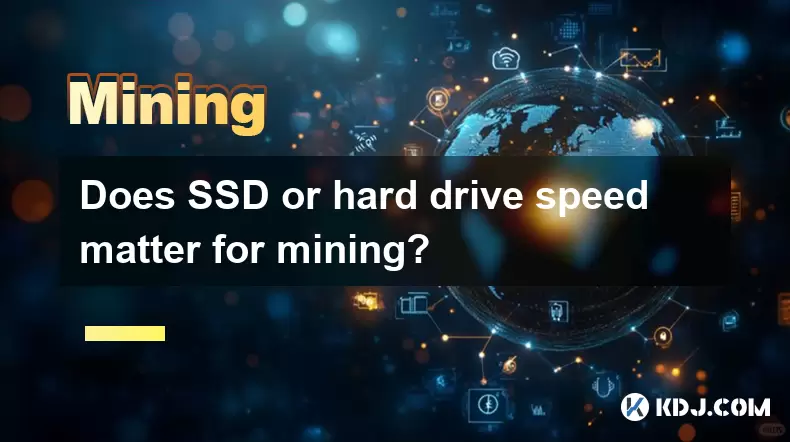
Understanding the Role of Storage in Mining
When it comes to cryptocurrency mining, most users focus on components like GPU performance, hash rate, and power consumption. However, storage devices such as SSDs (Solid State Drives) and HDDs (Hard Disk Drives) are often overlooked. While they don't directly contribute to mining speed or efficiency, their role can be significant depending on the type of mining and the blockchain protocol being used. For instance, Proof-of-Work algorithms that require frequent disk access may benefit from faster storage solutions.
How Mining Software Interacts with Storage Devices
Mining software typically reads and writes data during the initialization phase, especially when generating or accessing DAG files (Directed Acyclic Graph) for Ethereum-based mining. These files grow over time and must be stored locally. The speed at which a drive reads and writes this data can affect how quickly the miner initializes and begins hashing. In scenarios where the DAG file is large and frequently updated, an SSD’s faster read/write speeds can reduce load times compared to slower HDDs.
Impact of Storage Speed on GPU Mining Performance
In GPU mining, particularly for Ethereum and other memory-hard algorithms, the GPU relies on the DAG file stored on the local drive. If the storage device cannot supply the necessary data quickly enough, the GPU may stall, leading to reduced hash rates. This is more pronounced when using multiple GPUs, as each one may request data from the same file simultaneously. An SSD minimizes latency, ensuring that all GPUs have timely access to the required data, maintaining optimal performance across the board.
Storage Considerations for ASIC Miners
ASIC miners, unlike GPU miners, generally do not rely heavily on local storage. They are designed to perform specific hashing functions and usually only require minimal firmware or configuration files. As a result, hard drive speed has little to no impact on ASIC mining operations. However, if you're running monitoring tools or logging extensive data, a faster drive can help manage these background processes more efficiently.
Disk I/O Requirements Across Different Blockchains
Not all blockchains impose the same storage demands. Algorithms like Equihash (used by Zcash) and ProgPoW have different requirements than Ethereum's Ethash. Some newer consensus mechanisms, such as Chia’s Proof-of-Space-and-Time, are heavily dependent on storage capacity and speed, but those are classified under farming rather than traditional mining. In classic mining environments, high disk I/O becomes critical only when large datasets need to be accessed frequently. If your mining operation involves such datasets, investing in an SSD becomes more justified.
Practical Steps to Evaluate Storage Needs for Mining
If you're setting up or optimizing a mining rig, here are some steps to assess whether you should use an SSD or HDD:
- Check the algorithm requirements: Research whether the coin you’re mining requires heavy disk access or large dataset generation.
- Monitor boot-up and initialization times: Observe how long it takes for your mining software to start after booting. A slow HDD might delay this process significantly.
- Use benchmarking tools: Tools like CrystalDiskMark can help measure the read/write speeds of your current drive.
- Test with both drives: If possible, run the same mining setup using both an SSD and HDD to compare performance metrics like hash rate stability and initialization delays.
- Consider cost-effectiveness: SSDs are more expensive per gigabyte than HDDs. Determine if the potential gains justify the additional investment.
Frequently Asked Questions
Q: Can I use an external hard drive for mining?
Yes, but performance will depend on the interface and speed of the external drive. USB 3.0 or NVMe-based external SSDs can offer sufficient speeds for mining purposes, though internal connections are generally more reliable.
Q: Does mining wear out SSDs faster?
SSDs have a limited number of write cycles, but modern drives are built to last many years under normal usage. Mining doesn’t involve heavy continuous writing, so wear is generally not a concern unless you're handling massive log files or constant DAG updates.
Q: Is there any mining scenario where HDDs are better than SSDs?
For mining algorithms that do not require large datasets or frequent disk access, HDDs are perfectly adequate and more cost-effective. They are also useful for storing wallet backups, logs, and mining software without affecting performance.
Q: How much storage space do I need for mining?
This varies by algorithm and blockchain. Ethereum’s DAG file currently exceeds 4GB and grows over time. Other coins may require less space. Always check the current requirements before allocating storage.
Disclaimer:info@kdj.com
The information provided is not trading advice. kdj.com does not assume any responsibility for any investments made based on the information provided in this article. Cryptocurrencies are highly volatile and it is highly recommended that you invest with caution after thorough research!
If you believe that the content used on this website infringes your copyright, please contact us immediately (info@kdj.com) and we will delete it promptly.
- Rare Coins Alert: Could That £1 Coin Be Worth Over £500?
- 2025-07-24 14:30:12
- DOGE's Zero-Knowledge Leap: A Comeback Catalyst?
- 2025-07-24 14:30:12
- XRP, Solana, and Institutional Adoption: A New Era for Crypto?
- 2025-07-24 11:10:12
- Dogecoin, Remittix, and Crypto Protocols: The Evolution of Digital Finance
- 2025-07-24 10:50:12
- BlockDAG, Hedera, and Stellar: Charting the Course for Crypto's Future
- 2025-07-24 10:50:12
- BlockDAG's No-Vesting Edge: Can It Outpace Cardano's Price?
- 2025-07-24 11:10:12
Related knowledge
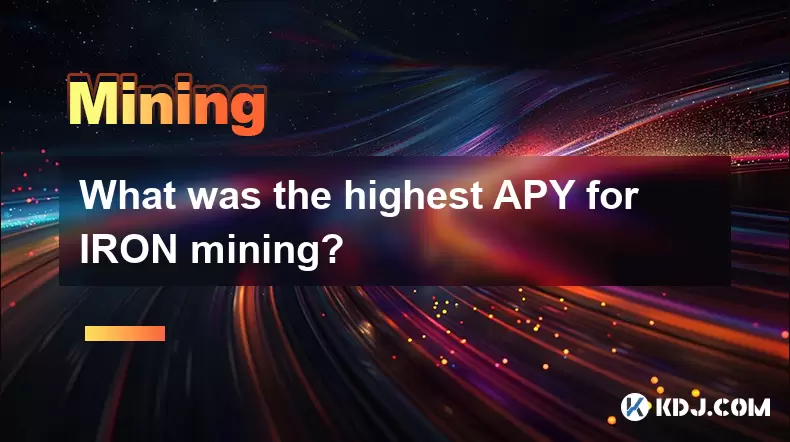
What was the highest APY for IRON mining?
Jul 23,2025 at 05:14am
Understanding IRON Token and Its Mining MechanismThe IRON token is a stablecoin that operates within the Iron Finance ecosystem, primarily on blockcha...

What is impermanent loss in IRON pools?
Jul 23,2025 at 09:00am
Understanding Impermanent Loss in the Context of IRON PoolsImpermanent loss is a phenomenon that affects liquidity providers in decentralized finance ...
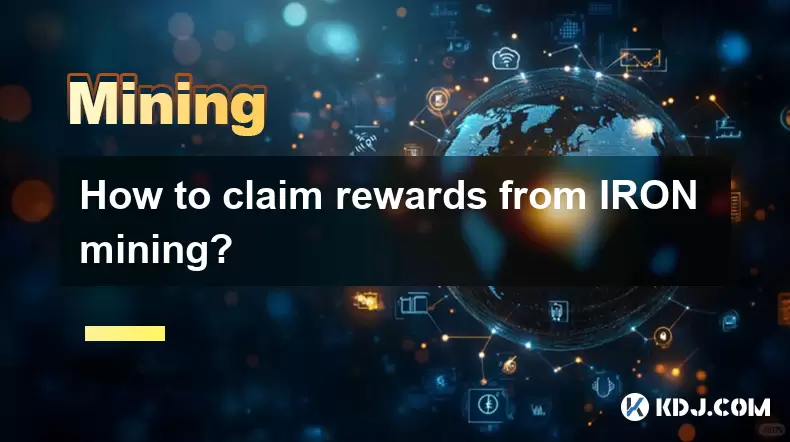
How to claim rewards from IRON mining?
Jul 23,2025 at 02:21pm
Understanding IRON Mining and Reward MechanismsIRON Finance operated as a decentralized finance (DeFi) protocol on the Polygon and Binance Smart Chain...
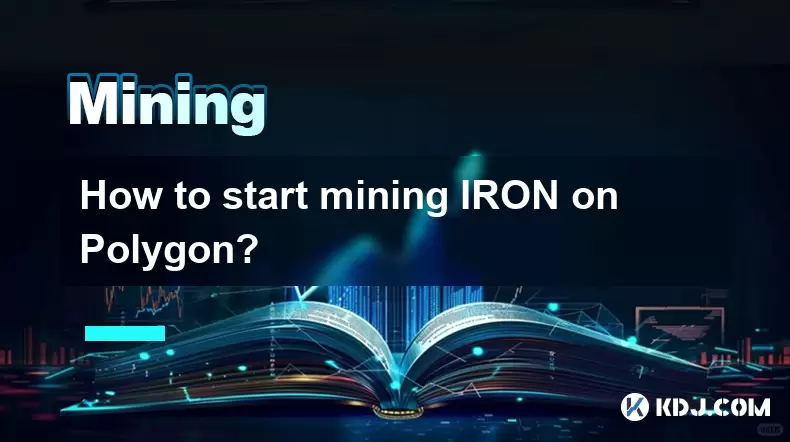
How to start mining IRON on Polygon?
Jul 23,2025 at 08:00pm
Understanding IRON and Its Role on PolygonIRON is a decentralized, algorithmic stablecoin designed to maintain a 1:1 peg with the US dollar. It operat...
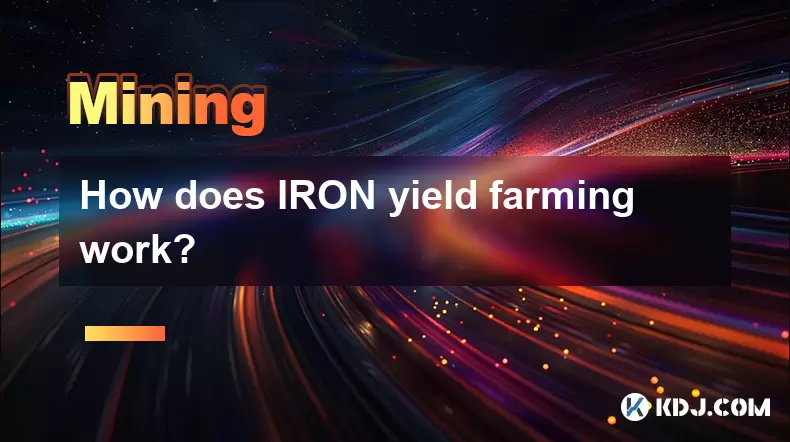
How does IRON yield farming work?
Jul 23,2025 at 10:14pm
Understanding IRON Yield Farming and Its Core MechanismIRON yield farming is a decentralized finance (DeFi) strategy that allows users to earn rewards...
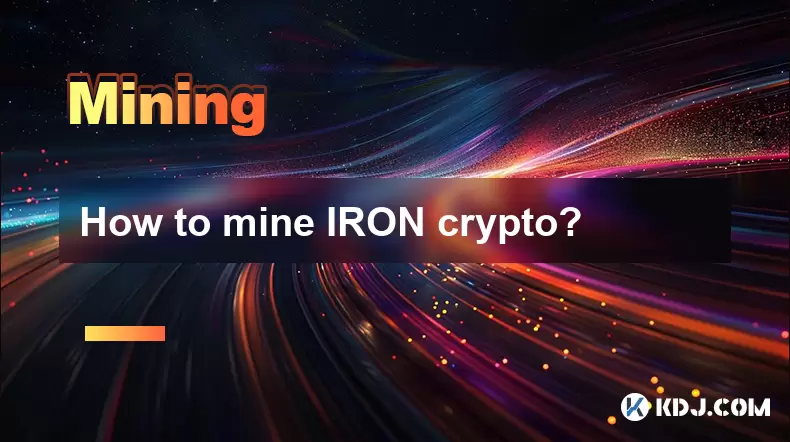
How to mine IRON crypto?
Jul 23,2025 at 07:08pm
Understanding IRON Crypto and Its Mining MechanismIRON crypto is not a standalone blockchain-based cryptocurrency that can be mined using traditional ...

What was the highest APY for IRON mining?
Jul 23,2025 at 05:14am
Understanding IRON Token and Its Mining MechanismThe IRON token is a stablecoin that operates within the Iron Finance ecosystem, primarily on blockcha...

What is impermanent loss in IRON pools?
Jul 23,2025 at 09:00am
Understanding Impermanent Loss in the Context of IRON PoolsImpermanent loss is a phenomenon that affects liquidity providers in decentralized finance ...

How to claim rewards from IRON mining?
Jul 23,2025 at 02:21pm
Understanding IRON Mining and Reward MechanismsIRON Finance operated as a decentralized finance (DeFi) protocol on the Polygon and Binance Smart Chain...

How to start mining IRON on Polygon?
Jul 23,2025 at 08:00pm
Understanding IRON and Its Role on PolygonIRON is a decentralized, algorithmic stablecoin designed to maintain a 1:1 peg with the US dollar. It operat...

How does IRON yield farming work?
Jul 23,2025 at 10:14pm
Understanding IRON Yield Farming and Its Core MechanismIRON yield farming is a decentralized finance (DeFi) strategy that allows users to earn rewards...

How to mine IRON crypto?
Jul 23,2025 at 07:08pm
Understanding IRON Crypto and Its Mining MechanismIRON crypto is not a standalone blockchain-based cryptocurrency that can be mined using traditional ...
See all articles

























































































